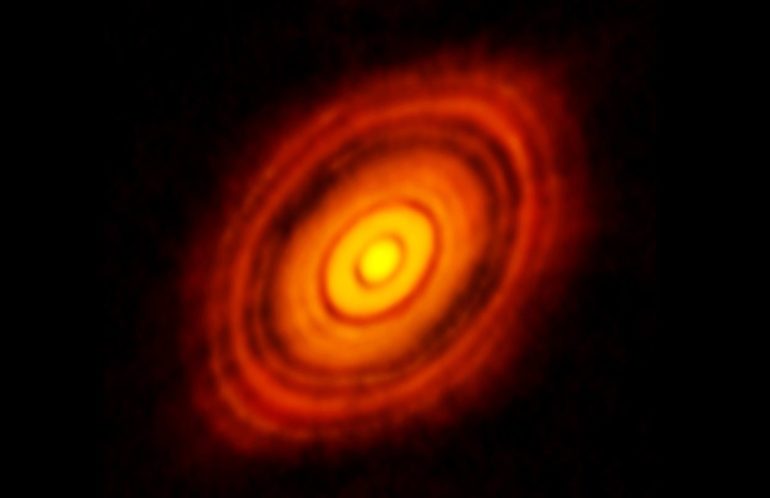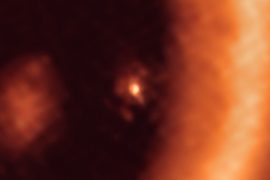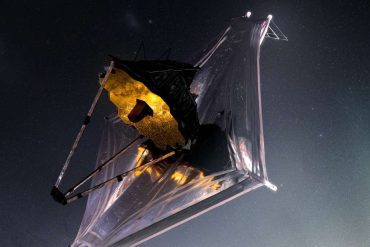How did the solar system get its distinctive structure? And why are the inner planets as they are? Astronomers may find answers to these questions by helping to reconstruct positions in the Solar System’s protoplanetary disks. According to this, three ring-shaped boundary regions shaped the formation of planets around the young Sun: an internal temperature range from which silicates evaporate, and two ice lines – regions from which water or carbon dioxide freezes into ice. goes. Because dust and planets accumulate in these transition zones, Earth-like planets on the first ring, gas giants in the middle and the Kuiper Belt on the outside.
Young stars are usually surrounded by swirling clouds of gas and dust. In this protoplanetary disk, celestial bodies can then form through successive agglomerations of material – the planets and their moons. Meanwhile, astronomers have observed several planetary systems around stars other than the Solar System. But there are still many unanswered questions. This includes how planets form in such systems and why, for example, neither super-Earths nor mini-Neptunes exist around the Sun, although they are common around other stars. However, model simulations suggest that the position and presence of certain phase transitions in the protoplanetary disk play a role in this – a region determined by temperature from which, for example, rocks no longer evaporate or water and other molecules freeze. Huh.
Secrets of pressure sleepers
Andre Izidoro of Rice University in Houston and his colleagues have now examined in more detail how such transition zones specifically affect planet formation. The starting point for this was the observation that many protoplanetary discs are structured in a nearly regular sequence of rings and gaps. “Such ring-like structures suggest that dust and lumps in the pressure threshold of the disk are concentrated there,” explain the astronomers. The material that migrates inwards towards the star in the rotating cloud is apparently held up by these thresholds and accumulates there. The researchers tested its results for planet formation with a simulation in which they reconstructed the evolution of the young Sun and its protoplanetary disk – sometimes without pressure thresholds and sometimes present at the time.
There were three such transition zones in the young Solar System: in the immediate vicinity of our star, at temperatures of more than 1400 Kelvin, the rock-forming silicate compounds are only in gaseous form. So planets can only arise outside this inner boundary, as only dust and rock fragments remain. Next are the so-called ice lines, the transition zones from which water vapor and carbon monoxide freeze into ice. These thresholds are at a temperature of minus 100 and minus 240 ° C. As the protoplanetary disc gradually cools, these transition zones also gradually move inward over time.
Transition zones determine the size and number of planets
Simulations confirmed that the pressure thresholds in the three transition zones lead to the accumulation of dust and planetary components. The inward-flowing dust grains and clumps get deposited in the boundary regions and they are found there fast enough to form the planet and thus form the planet building block. As a result, inner planets form just outside the silicate boundary. How large they become and how many planets there are depends on how much material is available between the innermost pressure limit and the next transition zone, the water-ice line. “Only the dust that rises within the ice line may have contributed to the formation of the planet in the inner disk,” Izidoro and his colleagues explained. If the ice line forms early and thus prevents supplies from the outer regions of the primordial cloud from moving in, then the material alone is sufficient to form low-mass, Mars-sized to Earth-size planets – as in the case It was the solar system. On the other hand, if the water-ice line forms later or only weakly, more material can flow into the inner region and super-Earths or mini-Neptunes can arise in the interior of the planetary system.
In the outer Solar System, beyond the water-ice line, material also collects and forms the building blocks of later gas giants. In simulation, the accumulation of 40 to 100 Earth masses of dust and debris formed the nuclei of giant planets such as Jupiter, Saturn, Uranus and Neptune. The orbits of these giants are initially very close to each other. Uranus and Neptune only migrate outward to their current distance from the Sun later. Even further, beyond the carbon monoxide snow line, the Kuiper Belt’s icy celestial bodies were formed in a similar way. Co-author Bertram says, “It was an absolute surprise to me how well our models were able to depict the evolution of planetary systems like our solar system – precisely because of the slightly different mass and chemical composition of Venus, Earth and Mars. Below.” Bits from the Max Planck Institute for Astronomy in Heidelberg. The simulation results confirm that fundamental physical parameters such as phase transitions and pressure thresholds in the protoplanetary disk form rings and gaps first, then planets.
Quayle: Andre Izidoro (Rice University, Houston) et al., Nature Astronomy, DOI: 10.1038/s41550-021-01557-Z

Web guru. Amateur thinker. Unapologetic problem solver. Zombie expert. Hipster-friendly travel geek. Social mediaholic.





